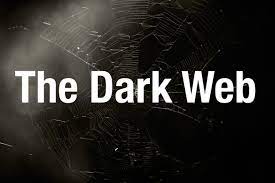Introduction to the Dark Web:
The internet has become an integral part of our lives, enabling us to connect, share information, and conduct business with ease. However, beyond the familiar realms of search engines and social media platforms lies a hidden and enigmatic corner known as the Dark Web. Contrary to its name, the Dark Web is not inherently evil, but rather a parallel internet that offers anonymity, privacy, and a sanctuary for freedom of speech. In this article, we will delve into the intricacies of the Dark Web, exploring its structure, functionalities, and its implications on society.
Understanding the Dark Web:
The Dark Web can be thought of as a subset of the deep web, which is essentially the portion of the internet that is not indexed by search engines. While the deep web encompasses various legitimate platforms like online banking portals, corporate intranets, and password-protected websites, the Dark Web operates on encrypted networks that require special software to access, such as Tor (The Onion Router).
TOR: Gateway to the Dark Web
The Tor network plays a pivotal role in enabling access to the Dark Web. Originally developed by the United States Naval Research Laboratory, Tor is an anonymity network that routes internet traffic through a series of volunteer-operated servers, known as relays or nodes, before reaching its final destination. Each relay decrypts a layer of encryption, hence the term "The Onion Router," until the traffic finally reaches the intended destination, making it difficult to trace back the original source.
Anonymity and Privacy:
The primary allure of the Dark Web lies in its commitment to preserving user anonymity and privacy. Tor, combined with other privacy-focused tools like VPNs (Virtual Private Networks), allows users to mask their IP addresses, making it arduous for anyone to identify their physical location or track their online activities. This environment fosters a sense of security and enables individuals living under oppressive regimes, journalists, whistleblowers, and activists to communicate and share information without fear of repercussion.
Marketplaces and Services:
While the Dark Web is often associated with illegal activities, it also hosts a myriad of legitimate services and marketplaces. One such example is cryptocurrency, with Bitcoin being the preferred medium of exchange due to its decentralized nature and relative anonymity. Cryptocurrencies facilitate secure transactions on the Dark Web, ranging from legal goods and services to illicit ones.
Illicit Activities:
Undeniably, the Dark Web has garnered notoriety for its association with illicit activities. Its anonymous nature has attracted criminal elements seeking to conduct illegal trade, such as drug trafficking, weapons trade, counterfeit currency, and identity theft. These activities are typically facilitated through hidden marketplaces like the infamous Silk Road, which was shut down by law enforcement in 2013, but others have sprung up in its wake. Additionally, forums and chat rooms exist where hackers exchange tools, stolen data, and engage in cybercriminal activities.
Cybersecurity and Law Enforcement Challenges:
The Dark Web poses significant challenges to law enforcement agencies and cybersecurity professionals. The veil of anonymity makes it difficult to trace criminal activities, locate individuals, and gather evidence. Law enforcement agencies often employ various techniques like honeypots (decoy websites), infiltrating online communities, and conducting targeted operations to identify and apprehend criminals. Furthermore, cybersecurity experts continuously monitor the Dark Web for emerging threats, vulnerabilities, and indicators of potential cyberattacks.
Ethical Implications and Freedom of Speech:
While the Dark Web is known for its association with illegal activities, it also serves as a haven for individuals seeking to exercise their freedom of speech and expression in repressive regimes. Dissidents, journalists, and activists can use the Dark Web to share information, coordinate protests, and raise awareness about human rights violations. However, this environment also enables hate speech, extremist ideologies, and other morally reprehensible content to flourish, raising complex ethical questions about the limits of free speech and the responsibility of online platforms.
Conclusion:
The Dark Web remains an intricate and multifaceted realm within the depths of the internet. It offers individuals a refuge from surveillance, a platform for free speech, and a marketplace for both legitimate and illicit transactions. While its association with illegal activities cannot be ignored, it is essential to recognize that the Dark Web serves various purposes and can have both positive and negative impacts on society. Understanding its nuances and implications allows us to navigate the digital landscape with a greater sense of awareness and responsibility.


Comments
Post a Comment